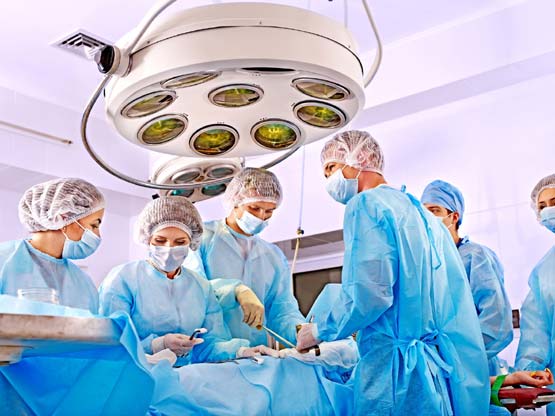
In a medical paper released in the journal of Soft Robotics last week, scientists from the University of Leeds unveiled a new "magnetic tentacle robot," which is composed of magnetic discs and is roughly 2 millimeters thick - about double the size of a ballpoint pen tip - and less than a-tenth-of-an-inch long.
In the future, the robot's use could be expanded to help doctors better, and more thoroughly, investigate other organs, such as the human heart, kidney or pancreas, they said.
"It's creepy," Pietro Valdastri, the project's lead researcher and chair of robotics and autonomous systems at the University of Leeds, said in an interview. "But my goal . . . is to find a way to reach as deep as possible inside the human body in the least invasive way as possible."
The robot is still 5 to 10 years away from showing up in a clinical setting, researchers said, but the device comes on the heels of a fleet of other robotic innovations allowing doctors the ability to better scan a patient's lungs for cancerous tissue. They are designed to ease a task doctors have long struggled with: reaching the inner recesses of the human body, for diagnostic and treatment purposes, without causing damage or using invasive procedures.
But the bronchoscope's width and rigidity limits how deep doctors can venture down a patient's lungs in search of cancerous or other problematic tissues. Parts of the lungs are left unexamined, Valdastri said, potentially causing harm.
"If you are not able to get a tissue sample, then you have to evaluate the risk of . . . not doing anything," he said. "This is a reason why, very often, cancer is detected at a very late stage."
The British robot would be the first to glide down a patient's lungs using magnetic control and not require manual guidance from a physician, allowing a more precise, agile and less-damaging way for doctors to investigate lung diseases, the study's research team said.
Although Valdastri's robot is years away from clinical application, its smaller size and magnetic composition would allow it to shape-shift more easily and better navigate the intricate shape of a lung's network of airways, which can look like a tree.
Magnets mounted on robotic arms outside the patient would be used to help guide the device into the lungs. Once inserted into a patient, the magnets would help the robot move down a patient's lungs autonomously, following a map of the patient's lung network, which would be mapped out before the procedure.
Once at its desired location, the robot could ultimately have the capability to take a tissue sample or deliver a clinical treatment. "Depending on where a tumor is," he said, "this may be the only way to reach [it] successfully."
Nitish V. Thakor, a professor of biomedical engineering at Johns Hopkins University, said the autonomous robot is "very novel and interesting technology" that could become potentially useful in areas outside the lungs, most notably the heart.
The device's autonomous capability is its unique factor, he said, and has the capability to change invasive surgeries. "I can imagine a future," he said, "where a full CAT scan is done of the lungs, and the surgeon sits down on a computer and lays out this navigation path of this kind of a snake robot and says: 'Go get it.' "
Despite that, Thakor said any autonomous robot would face an uphill climb being accepted by clinicians. "Which surgeon is going to want to lose business," he said. "People who do the clinical practice . . . guard it very carefully until they get trained."
Many steps remain before hospitals might put the robot into use. Valdastri's team recently wrapped up trials of the robot in cadavers, which he said were successful. After that, they plan to test it in small animals.
Ultimately, the technology could be licensed by a large medical device manufacturer, he said, which could shepherd the product through further clinical trials and approval by the Food and Drug Administration. Alternatively, the study team could form its own company, find investors and control the process itself.
The future is not without challenges, Valdastri said. From a technical perspective, the robot will need to adapt to a human's rhythms of respiration. Currently, magnetic fields help the robot navigate a patient's lungs, excluding people who have pacemakers or otherwise can't get MRI's from being able to use the technology.
Meanwhile, Janani S. Reisenauer, a surgeon at the Mayo Clinic who specializes in lung cancer, said that the jury is still out on how innovative the robot could be.
She noted that recent bronchoscopy robots made by Johnson and Johnson and Intuitive Surgical have made significant gains in letting doctors reach hard-to-reach parts of the lungs and collect tissue samples for lung cancer.
However, she said, if the autonomous robot develops the capability to go deep into the lungs and then deploy a medicine, screen for proteins that indicate tumors are developing, or other treatment, that would be of significant value to the field.
"If it's a small, maneuverable autonomous system that can get out there and then do something when it's out there," she said, "that would be revolutionary."


 Contact The Editor
Contact The Editor
 Articles By This Author
Articles By This Author